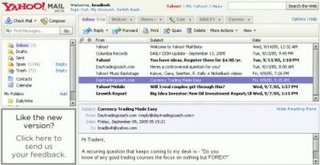The World is waiting!
As I boarded the British Airways aircraft, i saw an adline that read "The World is Waiting".
World is Waiting?
Yeah, thatz exactly what my parents, friends would be doing for me as I begin my new journey. The decision is made. The investment has been done. The process has begun,and yes, the results will be awaited.!!
Yipee !! This is my first post from the Queen's University.Itz a great feeling. The wait had been too long for me.I am happy and relieved to be here. I took the flight from Kolkata and on the way till the London Heathrow Airport, I experienced a wide range of emotions. For a few minutes,I even wondered if it was really me who took such a bold decision to travel 10,000 miles to get my MBA?:)
I always wanted to get the know how of management,understand the basics/concepts,participate in the case studies, contribute to the class discussions coz these are somethings that simply stimulate and energize me.So,even before I went on to do my engineering,I had pretty much made up my mind that I would go for an MBA. So, am quite pleased with myself for making a choice.
The internet at my room is yet to be set! So,I am using the computer at the Information center at the Graduate residence to write this stuff. The time is around 6 am now.
The journey from Kolkata to Kingston was a smooth one. At Kolkata, I met cricketer Debashis Mohanty and had an hour long chat with him. As he was from my home state, we spoke in the local language.He was heading to Wales to play for the English season. Our discussions ranged from his spectacular contribution in the 1999 world cup against England to his his swing bowling speciality.We also discussed about cricket as a career, cricket selection issues, temprament of cricket enthusiasts in India and of course his inputs on the Saurav Ganguly debate.Mohanty is a down to earth person and perhaps the fact that among all the passengers,it was just me who could identify him, he felt good.! :)
The immigration check at Canada was an easy affair. The Queen's university is a big name here and things went really smooth .Took a Coach Canada bus to Kingston from Toronto. The driver was in a chatty mode and was constantly talking about the fun and party that the University kids have out there but I was so tired that I slept all through the journey.I checked into my room at 2 am and called my parents to inform them that I had reached Kingston.
In the morning, met the other Indian classmates. A friendly set of people,most of them are from the IT industry.We dis some shopping yesterday and even went walking to check out the Lake Ontario. Itz beautiful. Quite, Wide and majestic.
Classes begin from May 02 and till then I have some time to set my room,get to explore the University and catch some sleep. :)
Take care
























